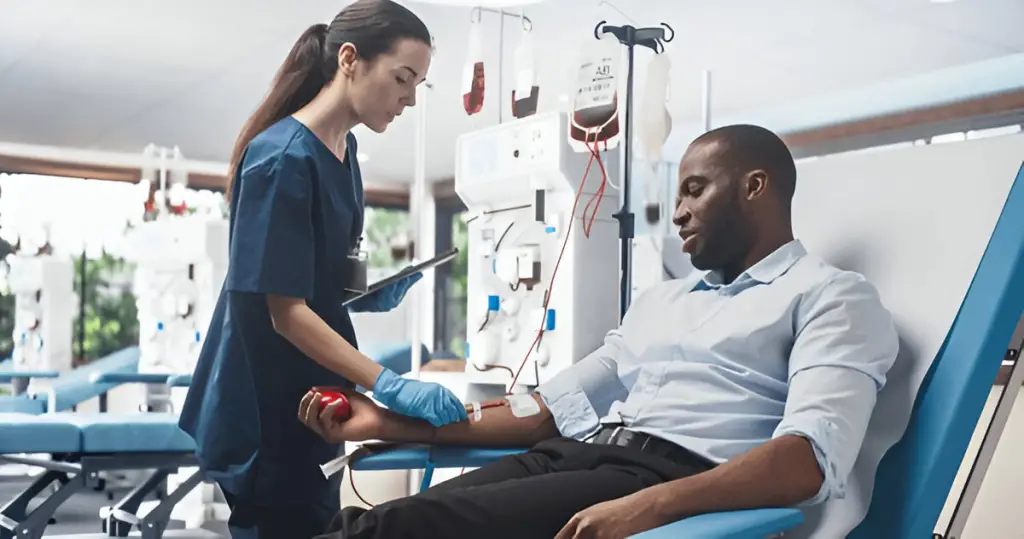Are you confused about Medicaid vs CHIP and which program fits your family? You are not alone in this confusion. Over 78 million Americans rely on Medicaid and CHIP (Children’s Health Insurance Program) coverage as of May 2025. Yet, many families struggle to understand the difference between Medicaid and CHIP programs. Your child’s healthcare coverage depends on knowing these key differences.
This guide explains CHIP eligibility income limits in simple terms. You will discover the (Children’s Health Insurance Program) CHIP benefits compared to Medicaid coverage options. We show you exactly how to apply for CHIP vs Medicaid programs. You will learn whether you can have both Medicaid and CHIP coverage for your family.
By reading this complete guide, you gain clear answers about both programs. Your family deserves the right healthcare coverage, and understanding Medicaid vs CHIP (Children’s Health Insurance Program) helps you make informed decisions for 2025 and moving into 2026.
Table of Contents
What is Medicaid?

Medicaid provides healthcare coverage for low-income individuals and families across America. This joint federal-state program has helped millions since 1965. Your state works with the federal government to provide these benefits.
Who Qualifies for Medicaid?
Medicaid covers several groups of people in your community. You may qualify if you fall into these categories:
- Children and families with limited income
- Pregnant women needing prenatal and delivery care
- Adults in states that expanded Medicaid programs
- Elderly individuals requiring long-term care services
- People with disabilities who need ongoing medical support
Medicaid Coverage Benefits
Your Medicaid coverage includes comprehensive healthcare services throughout 2025 and into 2026. The program covers doctor visits, hospital stays, and prescription medications. You also receive preventive care like vaccinations and screenings. Emergency services are always covered under your Medicaid plan.
What is CHIP (Children’s Health Insurance Program)?

CHIP (Children’s Health Insurance Program) provides healthcare coverage specifically for children in working families. Your family might earn too much for Medicaid but still need help. The program started in 1997 to fill this coverage gap.
Who Qualifies for CHIP?
CHIP (Children’s Health Insurance Program) serves children whose families earn more than the Medicaid limits. (Children’s Health Insurance Program) CHIP eligibility levels vary by state and can range from as low as 170% up to 400% of the Federal poverty level (FPL). Your child may qualify if your family income falls within these ranges.
CHIP Coverage Benefits
Your child receives comprehensive healthcare through CHIP (Children’s Health Insurance Program) programs in 2025 and beyond. The coverage includes regular checkups, immunizations, and dental care. Vision services and prescription drugs are also covered benefits. Emergency care is always available for your child.
Key Differences: Medicaid vs CHIP (Children’s Health Insurance Program)

Understanding the difference between Medicaid and CHIP (Children’s Health Insurance Program) helps you choose the correct option for your family. Both programs serve different populations with varying income requirements.
Age Requirements Comparison
Medicaid Coverage:
- Covers all ages from birth to the elderly
- No upper age limit for qualifying individuals
- Serves entire families meeting income requirements
CHIP Coverage:
- Covers children up to age 19 only
- Some states cover pregnant women through CHIP (Children’s Health Insurance Program)
- Does not cover adults or elderly individuals
Income Limits: CHIP Eligibility Income Limits vs Medicaid
Your family’s income determines which program fits your needs. In states that have expanded Medicaid coverage, you can qualify based on income alone at 138% of the federal poverty level.
CHIP (Children’s Health Insurance Program) eligibility income limits are generally higher than Medicaid limits. Most states set CHIP (Children’s Health Insurance Program) limits between 200% and 400% of the Federal Poverty Level (FPL).
CHIP Benefits Compared to Medicaid
Both programs provide essential healthcare coverage with some key differences:
Medicaid Benefits:
- Comprehensive coverage, including long-term care
- Limited cost-sharing requirements for families
- Covers nursing home care and home health services
- No premiums for most beneficiaries
CHIP Benefits:
- Focus on pediatric and preventive care services
- May include small premiums or copayments
- Covers dental and vision care for children
- Does not include long-term care services
State-by-State Income Limits Comparison Table

Your state determines specific income limits for both programs. All income standards are expressed as a percentage of the federal poverty level (FPL) as of December 1, 2023. Here’s the comprehensive comparison for all 50 states:
| State | Medicaid Children (0-18) | CHIP Income Limit | Medicaid Adults | Source |
| Alabama | 146% FPL | 317% FPL | 18% FPL | Alabama Medicaid |
| Alaska | 203% FPL | 203% FPL | 138% FPL | Alaska DHSS |
| Arizona | 156% FPL | 200% FPL | 138% FPL | Arizona AHCCCS |
| Arkansas | 142% FPL | 200% FPL | 138% FPL | Arkansas DHS |
| California | 266% FPL | 317% FPL | 138% FPL | California DHCS |
| Colorado | 156% FPL | 250% FPL | 138% FPL | Colorado HCPF |
| Connecticut | 201% FPL | 300% FPL | 138% FPL | Connecticut DSS |
| Delaware | 200% FPL | 300% FPL | 138% FPL | Delaware DHSS |
| Florida | 206% FPL | 200% FPL | 64% FPL | Florida DCF |
| Georgia | 149% FPL | 247% FPL | 46% FPL | Georgia DCH |
| Hawaii | 200% FPL | 300% FPL | 138% FPL | Hawaii DHS |
| Idaho | 190% FPL | 190% FPL | 138% FPL | Idaho DHW |
| Illinois | 142% FPL | 317% FPL | 138% FPL | Illinois HFS |
| Indiana | 152% FPL | 250% FPL | 138% FPL | Indiana FSSA |
| Iowa | 167% FPL | 300% FPL | 138% FPL | Iowa DHS |
| Kansas | 156% FPL | 250% FPL | 46% FPL | Kansas DCF |
| Kentucky | 156% FPL | 200% FPL | 138% FPL | Kentucky CHFS |
| Louisiana | 200% FPL | 250% FPL | 138% FPL | Louisiana DHH |
| Maine | 200% FPL | 200% FPL | 138% FPL | Maine DHHS |
| Maryland | 322% FPL | 322% FPL | 138% FPL | Maryland Health |
| Massachusetts | 300% FPL | 300% FPL | 138% FPL | Massachusetts MassHealth |
| Michigan | 156% FPL | 200% FPL | 138% FPL | Michigan MDHHS |
| Minnesota | 283% FPL | 283% FPL | 200% FPL | Minnesota DHS |
| Mississippi | 194% FPL | 200% FPL | 43% FPL | Mississippi DOM |
| Missouri | 156% FPL | 300% FPL | 138% FPL | Missouri DSS |
| Montana | 156% FPL | 250% FPL | 138% FPL | Montana DPHHS |
| Nebraska | 200% FPL | 200% FPL | 138% FPL | Nebraska DHHS |
| Nevada | 200% FPL | 200% FPL | 138% FPL | Nevada DHHS |
| New Hampshire | 196% FPL | 300% FPL | 138% FPL | New Hampshire DHHS |
| New Jersey | 355% FPL | 355% FPL | 138% FPL | New Jersey DHS |
| New Mexico | 241% FPL | 300% FPL | 138% FPL | New Mexico HSD |
| New York | 223% FPL | 400% FPL | 138% FPL | New York DOH |
| North Carolina | 200% FPL | 200% FPL | 138% FPL | North Carolina DHHS |
| North Dakota | 156% FPL | 200% FPL | 138% FPL | North Dakota DHS |
| Ohio | 156% FPL | 200% FPL | 138% FPL | Ohio Medicaid |
| Oklahoma | 156% FPL | 200% FPL | 138% FPL | Oklahoma OHCA |
| Oregon | 305% FPL | 305% FPL | 138% FPL | Oregon OHA |
| Pennsylvania | 201% FPL | 300% FPL | 138% FPL | Pennsylvania DHS |
| Rhode Island | 261% FPL | 300% FPL | 138% FPL | Rhode Island DHS |
| South Carolina | 194% FPL | 200% FPL | 67% FPL | South Carolina DHHS |
| South Dakota | 156% FPL | 200% FPL | 52% FPL | South Dakota DSS |
| Tennessee | 156% FPL | 250% FPL | 95% FPL | Tennessee Division of TennCare |
| Texas | 201% FPL | 200% FPL | 41% FPL | Texas HHSC |
| Utah | 156% FPL | 200% FPL | 138% FPL | Utah DWS |
| Vermont | 312% FPL | 312% FPL | 138% FPL | Vermont DVHA |
| Virginia | 200% FPL | 200% FPL | 138% FPL | Virginia DMAS |
| Washington | 300% FPL | 300% FPL | 138% FPL | Washington HCA |
| West Virginia | 156% FPL | 200% FPL | 138% FPL | West Virginia DHHR |
| Wisconsin | 306% FPL | 306% FPL | 100% FPL | Wisconsin DHS |
| Wyoming | 156% FPL | 200% FPL | 56% FPL | Wyoming DFS |
Note: FPL = Federal Poverty Level. Data current as of 2025 and applies to 2026 eligibility. Source: Official CMS Data
Can You Have Both Medicaid and CHIP (Children’s Health Insurance Program)?

You cannot have both Medicaid and CHIP (Children’s Health Insurance Program) coverage at the same time. Your eligibility gets determined for Medicaid first, then CHIP (Children’s Health Insurance Program) programs. If your child qualifies for Medicaid, they receive Medicaid coverage instead.
Priority Rules for Coverage
- Step 1: Your state checks Medicaid eligibility first
- Step 2: If income is too high for Medicaid, CHIP (Children’s Health Insurance Program) eligibility gets reviewed
- Step 3: Your child receives coverage from the appropriate program
Transition Between Programs
Your family may transition between Medicaid vs CHIP coverage when circumstances change. Income increases might move your child from Medicaid to CHIP (Children’s Health Insurance Program). Income decreases could qualify your child for Medicaid instead.
How to Apply for CHIP vs Medicaid?

The application process remains simple for both programs throughout 2025 and 2026. Most states use one application for both the Medicaid vs CHIP (Children’s Health Insurance Program) programs.
Where to Apply
You have multiple options for submitting your applications:
- Online: HealthCare.gov (most common)
- Phone: Call your state Medicaid office directly
- In-Person: Visit local social services offices
- Mail: Send completed applications to your state agency
Required Documents
Gather these documents before starting your application process:
- Income verification (pay stubs, tax returns, benefit letters)
- Identity proof (birth certificates, Social Security cards)
- Citizenship documents (passport, naturalization papers)
- Residency proof (utility bills, lease agreements)
Application Timeline
Your application gets processed within specific timeframes during 2025 and 2026:
- Medicaid: 45 days maximum for processing decisions
- CHIP: 45 days maximum for processing decisions
- Emergencies: Coverage may begin immediately
Frequently Asked Questions (FAQs)
Are CHIPs the same as Medicaid?
No, CHIP (Children’s Health Insurance Program) and Medicaid are different programs with distinct purposes. Medicaid covers all ages, while CHIP (Children’s Health Insurance Program) focuses on children only. Your family’s income level determines which program fits your needs.
Can you get a CHIP if you have Medicaid?
You cannot receive both CHIP (Children’s Health Insurance Program) and Medicaid coverage simultaneously. Your state determines Medicaid eligibility first, and then considers the Children’s Health Insurance Program (CHIP) if your income exceeds the Medicaid limits.
How to switch from Medicaid to CHIP?
You report income changes to your state Medicaid office immediately. Your state will review your eligibility and transfer coverage if your income becomes too high for Medicaid but still qualifies you for CHIP (Children’s Health Insurance Program).
What is Medicaid now called?
Medicaid keeps its original name across all states in 2025 and 2026. Some states use additional names like “Medi-Cal” in California or “MassHealth” in Massachusetts, but these remain Medicaid programs.
Conclusion
Understanding Medicaid vs CHIP (Children’s Health Insurance Program) helps your family access the right healthcare coverage. Both programs serve different income levels and age groups effectively. Your child deserves quality healthcare regardless of your family’s financial situation.
The difference between Medicaid and CHIP (Children’s Health Insurance Program) becomes clear when you compare eligibility requirements and benefits. CHIP (Children’s Health Insurance Program) eligibility income limits are generally higher than Medicaid thresholds. You can apply for both programs using a single application process.
Contact your state Medicaid office today to determine which program serves your family best. Healthcare coverage for 2025 and into 2026 ensures your family stays healthy and protected.
